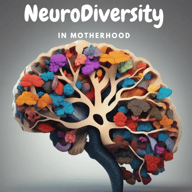Understanding Attention Deficit Disorder (ADD)


In this blog, we will address ADD, its prevalence and diagnosis, and the associated signs and symptoms to provide mothers with a comprehensive understanding of this condition.
What is ADD?
Attention Deficit Disorder (ADD) is a neurodevelopmental disorder characterised by difficulties in sustaining attention. ADD is often confused with Attention Deficit Hyperactivity Disorder (ADHD), but, as the name suggests, ADD does not include hyperactivity as an essential component. Children with ADD generally exhibit significant attention problems and may be described as daydreamers or uninterested in activities around them.
The diagnosis of ADD is typically based on criteria described in the Diagnostic and Statistical Manual of Mental Disorders (DSM-5), published by the American Psychiatric Association. The main symptoms include:
Difficulty paying attention to details;
Difficulty following instructions or completing tasks;
Tendency to lose necessary items for activities.
ADD is a condition for parts of and is often associated with childhood; it can persist into adolescence and adulthood, impacting school, social, and professional life (Faraone et al., 2005).
Prevalence and Diagnosis
Studies indicate that the prevalence of ADD may be approximately 5% of the child population, although this rate can vary (Thomas et al., 2015). The diagnosis is crucial and should be made by psychiatrists or psychologists. The diagnostic process involves a comprehensive assessment that takes time and includes interviews with parents, teachers, and, when possible, the child.
The diagnosis of ADD is based on observations of the child's behaviours in different environments, such as home and school. For an accurate diagnosis, symptoms must be present in multiple environments and cause significant impairment in daily activities.
Gathering information about the child's medical and behavioural history is essential, and tools like screening questionnaires and assessment scales may assist in the diagnostic process (American Psychiatric Association, 2013).
Signs and Symptoms
Below are the main signs that parents should be aware of; remember that the signs and symptoms of ADD can be subtle and vary from child to child.
Inattention:
Difficulty maintaining focus on tasks or activities.
It is difficult to pay attention to and focus on details.
Frequent forgetfulness, such as losing tasks or school materials.
Difficulty following instructions and completing tasks.
Impulsivity:
Tendency to interrupt others or need help with waiting their turn in social situations.
Making reckless decisions without considering the consequences can lead to behavioural problems.
They have difficulty controlling their emotions, resulting in outbursts of anger or frustration.
Tips for Mothers
For mothers the experience of raising a child with ADD can be emotionally challenging for mothers due to some daily challenges, stress, feelings of guilt, and the pressure to help their children overcome difficulties. Remember that sometimes the mothers also have ADD themselves.
Stress and Anxiety: Many mothers have ADD or ADHD themselves; some report elevated levels of stress due to the constant struggle to manage challenging behaviours and the feeling that they are not doing enough to help their children. This situation can lead to feelings of inadequacy and isolation.
The Importance of Support for the Child and Mother: Seeking support is crucial for mothers' mental well-being. Support groups, individual therapy, and educational programs focused on ADD can provide a safe space to share experiences and coping strategies for both mothers and children. Additionally, creating a clear action plan with the help of professionals can help mothers feel more empowered and capable of dealing with daily challenges to support the child with executive function skills.
References:
American Psychiatric Association. (2013). Diagnostic and Statistical Manual of Mental Disorders (5th ed.). Arlington, VA: Author.
Faraone, S. V., et al. (2005). "Attention-deficit/hyperactivity disorder." The Lancet.
Thomas, R., et al. (2015). "The prevalence of attention-deficit hyperactivity disorder: a systematic review and meta-analysis." Psychological Medicine.
